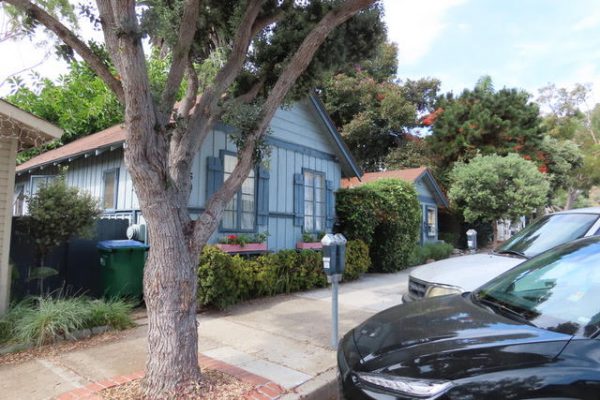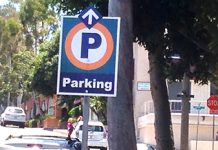
Laguna Beach has moved toward rolling back preservation requirements for owners of structures deemed historic resources by city officials nearly 40 years ago.
The Laguna Beach City Council’s 4-1 vote on Tuesday, Councilmember Toni Iseman dissented, caps a five-year effort that included more than 30 public meetings to change city law on historic preservation.
On one hand, a group of homeowners, real estate agents, and property rights advocates argue the City Council ended an unfair practice that limited people’s ability to remodel privately-owned property. On the other hand, long-time residents and history lovers argued that Laguna Beach’s unique architectural patchwork should be handed down to future generations and that a voluntary preservation program would prevent this.
Either way, the vote is a major victory for the council majority, including Councilmembers Sue Kempf and Peter Blake, who were elected in 2018 partly on promises to roll back historic preservation requirements.
In 1980 and 1981, the city-sponsored a Historic Resources Inventory that identified 852 pre-1940 homes and commercial buildings in Laguna Bech as having historically significant architecture. Separately, the city maintained a Historic Register of properties named by the Heritage Committee as historically or architecturally valuable. In return for signing an agreement to maintain their property in its historical condition, property owners get incentives such as exemptions from parking and property line setback requirements.
“If the benefits were so great and so obvious we wouldn’t need any compulsion—in other words, we wouldn’t be holding people this inventory,” Kempf said. “You see all these long-time Laguna residents who are upset with being stuck on this inventory and their just trying to fix up their houses. And frankly, they can’t afford it.”
Laguna Beach now holds that the Historic Inventory no longer meets the requirements of the state public resources law because it hasn’t been updated within five years.
Merrill Anderson, a Laguna Beach resident and Village Laguna board member, read a letter Tuesday from Alan Hess, an Irvine-based architect and State Historical Resources Commissioner, that summed up preservationists’ argument that maintaining architectural treasurers provides an economic benefit that would be eroded by a voluntary program.
“The very reasons people want to live here and tourists want to visit us is the character of its streets, neighborhoods and extraordinary landscapes as they have evolved over the years,” Hess wrote. “The role of historic structures in sustaining the economic vitality and ongoing appeal of Laguna Beach cannot be underestimated. Yet the proposals take a short-sighted approach that would substantially undercut those values.”
The Laguna Board of Realtors authored a letter, signed by President Jim Ardery, strongly supporting the revisions to the historic preservation ordinance. The historic inventory has been viewed as a thorn by Laguna Beach home sellers, buyers, and the real estate agents who shepherd these transactions.
“We believe the revised ordinance establishes a balance between private property rights and the encouragement of preservation. Specifically, we support a voluntary program, the elimination of references to the existing inventories [and] establishing/maintaining valuable incentives that encourage property owners to voluntarily pressed and restore,” Ardery said.
Iseman argued that Laguna Beach has not successfully explained the benefits available to the owners of historic homes, particularly in the early stages of the permit process.
“There are some substantial errors we’ve made along the way to make this an unpopular situation and I compare it to not getting a car fixed before it dies,” she said. “We had minor things along the way that could have prevented some of the horror stories and the horror stories are accurate. But for every horror story, there are success stories.”
Opponents of the modified historic preservation levied several technical arguments in an unsuccessful effort to convince the City Council to hold off on a vote. Among them was an argument that city staffers should have conducted a full environmental impact report to study the potential effects of demolitions and major remodeling. Instead, they went with a less arduous document called a mitigated negative declaration.
Some residents were also concerned that city staffers posted a redlined version of the ordinance on Tuesday morning after cleaning language in the proposed ordinance. Senior Planner Martina Caron said city staffers believed the edits didn’t constitute material changes.
Although it was clear where the City Council was headed, Laguna Beach resident and Caltech English professor Catherine Jurca she was still surprised that they adopted the [Negative Declaration] and the revised ordinance.
“They made such a weak case for the approval of the [Negative Declaration] that would eliminate protections for hundreds of structures,” Jurca said. “I think it does invite litigation.”
Jurca added city officials were wrong to argue that opening historic homes to demolition and remodeling would have no significant environmental impact under the California Environmental Quality Act (CEQA).
“It’s such an egregious violation,” she said.
Mayor Bob Whalen pointed out Tuesday that the city is still obligated to follow CEQA and other state rules that qualify a structure for recognition as a historic resource.
“I don’t think this is going to result in a fundamental change to the physical nature to our community,” Whalen said. “300 properties have gone onto the historic register for 30 plus years now. 500 have sat on this inventory and not gone but also many of them continue to exist. So I don’t think this is going to be an opening of the floodgates to a redesign of the city.”





I grew up in Laguna Beach and getting rid of the historical sights, trees, and quaint village vibe would be a tragedy. LBHS 1979
I too grew up in Laguna Beach 1959 till 1973 . . . keep the trees . . . not “paved paradise, and put up a parking lot . . . ” Joni Mitchell